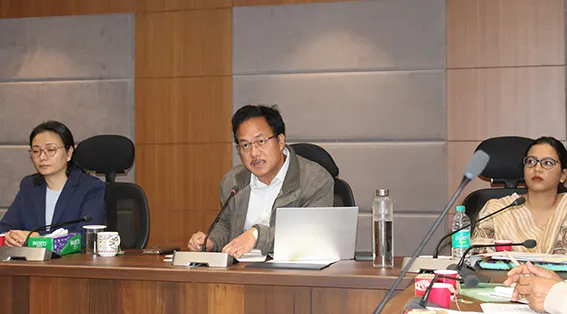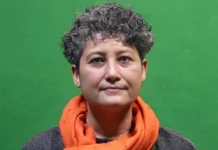ITANAGAR, 4 Jan: “Allocating funds under centrally-sponsored schemes (CSS) solely based on population metrics is detrimental to Arunachal Pradesh,” said Agriculture & Horticulture Minister Gabriel D Wangsu. Instead, he called for a framework that considers the state’s vast land resources and the socioeconomic conditions of its farmers.
Presenting a comprehensive case for the state’s unique agricultural needs during a videoconference on agricultural reforms chaired by union Agriculture and Farmers’ Welfare Minister Shivraj Singh Chauhan on Saturday, Wangsu said, “Our state’s huge potential for agricultural development, combined with the need to uplift the livelihoods of our farmers, must be reflected in the allocation criteria.”
He called for change in the current fund disbursement model under CSS, stressing that the release of funds in four installments is impractical for a geographically challenging state like Arunachal. “This approach,” he explained, “delays the timely implementation of agricultural projects, as farming activities cannot be left incomplete due to funding shortages.” To address the issue, Wangsu proposed a single-installment disbursement model, which would allow for seamless project execution and efficient resource utilisation.
Addressing the traditional practice of shifting cultivation prevalent in the region, Wangsu urged the central government to support sustainable alternative farming such as terrace farming, capacity building and extension services. “These initiatives,” he said, “would help mitigate environmental degradation while enhancing agricultural productivity.”
Another critical concern Wangsu raised during the discussion was the burden of farmers’ contributions under the PMKSY (per drop more crop) scheme. He proposed reducing the contribution from 45% to 15% to make the micro-irrigation programme more accessible, especially for small and marginal farmers.
He also drew attention to the strategic importance of Arunachal along the India-China border, calling for separate financial allocations under the Vibrant Village Programme (VVP) to ensure holistic agricultural development in these remote and sensitive areas.
The minister also highlighted the growing human-animal conflicts in Arunachal, which pose significant challenges to agriculture and livelihoods. He advocated an integrated policy framework that combines land-use planning, agricultural strategies and wildlife conservation to promote coexistence between humans and wildlife.
Recognising the potential of tuber crops such as sweet potatoes, yams and tapioca, Wangsu highlighted their importance in the diets and economies of indigenous communities. He called for targeted efforts to promote their production, value addition and marketing to enhance food security and economic resilience.
Regarding horticulture sector, Wangsu expressed concern over administrative delays caused by the merging of key schemes under the Krishonnati Yojana. He proposed granting functional autonomy to the horticulture division to expedite the implementation of schemes and ensure the sector’s growth. Additionally, he recommended a separate cluster
development programme (CDP) for the Northeastern and Himalayan states, considering their unique geographical and demographic constraints.
Emphasising the need for enhanced financial allocations for the horticulture sector in Arunachal, Wangsu said that “the growth of horticulture is not just an economic necessity but an ecological imperative for our state.”
The conference was attended by agriculture and horticulture ministers from across India to share their perspectives on advancing agricultural policies and practices, ahead of the budget session.




